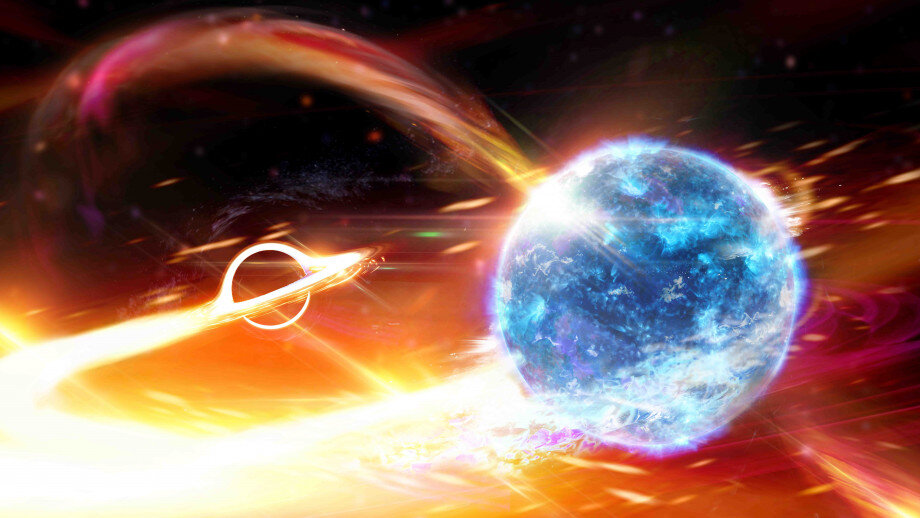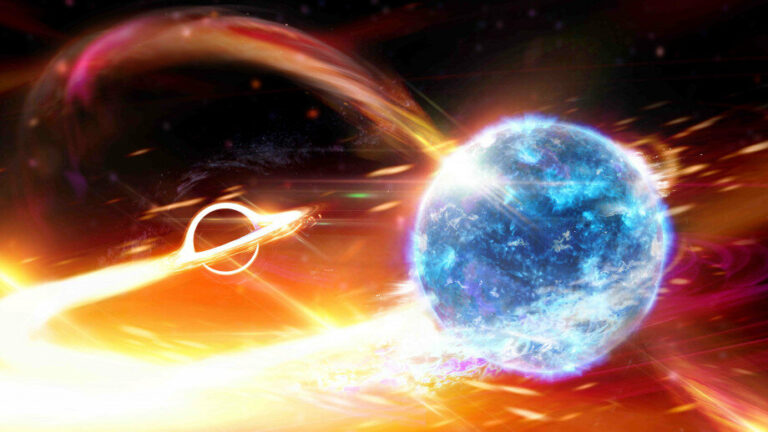Scientists created a simulation of a black hole and neutron star merging.
A group of scientists from the Max Planck Society’s Institute of Gravitational Physics and Japan created the first comprehensive model of the encounter between a black hole and a neutron star using a supercomputer. In their study, they computed the system’s status throughout the merger, the latter phases of orbital rendezvous, and the stage after that at which, based on the data at hand, a gamma-ray burst would take place.
Merging of a black hole and a neutron star
Two possibilities were examined by the researchers. A revolving black hole with a mass of 5.4 sun mass took part in the merger in one, whereas one with an 8.1 solar mass did so. In each scenario, the neutron star’s mass was 1.35 times greater than that of the Sun. These settings were made with the presumption that the black hole’s tidal forces will shatter the neutron star.

The entire process, according to the researchers, lasts for around two seconds, yet a tremendous amount of activities take place in that time. After the neutron star completes its final orbits, it is destroyed by tidal forces, matter ejection, the creation of an accretion disk, and jets.
Gamma flash and gold
According to simulations, a black hole may consume up to 80% of a neutron star’s matter—or around one solar mass—in just a few milliseconds. The neutron star’s leftover material creates a one-arm spiral shape during the course of the following 10 milliseconds.
Future events involve the ejection of some spiral arm materials from the system and the formation of an accretion disk around the black hole from the remaining material. This accretion disk collides with the black hole, creating a jet of electromagnetic radiation that can produce a brief gamma-ray flare. The research also suggested that heavy metals like gold and platinum may be present in the erupting material’s flows.
It should be noted that it took the Sakura supercomputer nearly two months to duplicate the two-second occurrence. Because of this, scientists in these situations frequently restrict themselves to simulating relatively brief processes. But according to the study team, only end-to-end simulation can provide a comprehensive view of all operations. The work has already begun, and it will replicate the merging of two neutron stars.
Additionally, you may read about how the “space police” stumbled onto a dormant black hole in a nearby galaxy.
Do not forget to share your opinion with us to provide you with the best posts !





0 Comments